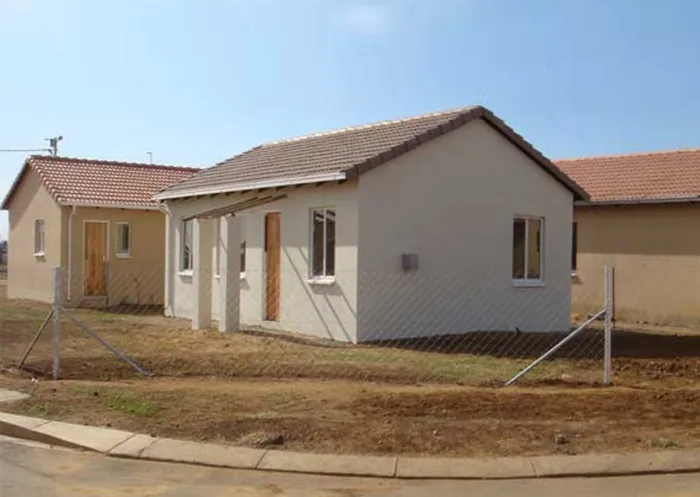South Africa's low-income households face severe housing shortage: a call for action

South Africa is facing a national housing backlog of approximately 2.4 million units.
Image: Supplied
As Minister Thembi Simelane tables the Department of Human Settlements (DHS) budget vote on Wednesday, South Africa’s low-income households contend with an acute shortage of formal housing stock.
According to data analysed by Lightstone, a provider of comprehensive data, analytics and systems on property, automotive and business assets, there was one property for 4.8 households earning under R13 000 a month.
The ratio improved to 3.3 households for every one formal property if the salary threshold moved to R26 000 a month, says Hayley Ivins-Downes, the Managing Executive Real Estate, Lightstone Property. For higher income groups, this ratio was closer to 1.2 to 1.
“But either way, more than 80% of South Africa’s households earned under R26 000 per month, which meant affordability remained a major obstacle to most households having a property to call their own,” Ivins-Downes said.
The property market intelligence provider said there were nearly 12 million households earning less than R13 000 a month (see graph below), with just under 2.5 million properties available if households stuck to the guideline that they spend no more than a third of their income on housing.
Ivins-Downes said this was the most significant gap between households and property available by some distance.
“For example, there were another 2.5 million households earning between R13 000 and R26 000 per month, but there were 1.8m properties available, which translated into 1.3 households for every property available.”
Interestingly, there were more properties available than households in the R26 000 to R40 000 salary range.
The managing executive said this, then pushed many into backyard rentals, informal structures or traditional dwellings that were not formally registered- and often these options were further away from work than is ideal.
“In many towns, lower-income working people struggled most to find accommodation while property values rose for the more affluent.”
For homes valued under R300 000- 80% of which were subsidised- only 1% had been bought or sold in the last five years compared to 4% in the R300 000 to R500 000 price band, 6% in the R500 000 to R750 000 price band and 13% in the R750 000 to R2m price band.
Ivins-Downes said the data showed that not only was there a significant shortage of affordable housing, but there were proportionately fewer transactions among lower-income earners, limiting mobility, equity growth, and broader economic participation.
The company said an analysis of the data showed that the more education households have, the more likely they are to be able to buy houses in higher price bands.
“For example, a household with two working people who did not have a matric would likely be able to afford a house valued at R250 000, but this jumped to R380 000 where the two have a matric and to R1.8m when they have degrees,” Ivins-Downes said.
She said mapping these affordability scenarios to actual suburbs showed how the difference in education-and consequently earning potential-affected housing choice.
In Johannesburg, couples without matric were said to find affordable stock in areas such as Hillbrow, Johannesburg Central and Orange Farm, while couples with degrees would be buying in suburbs such as Morningside, North Riding and Weltevreden Park.
The Fact Sheet that draws the attention of policymakers and other stakeholders to the progress made by South Africans in terms of their highest levels of educational attainment (HLEA), said the proportion of the 25–64-year-old population that had secondary (Grade 12 or equivalent) as the HLEA increased from 27.4% in 2015 to 33.0% in 2023.
Persons with the certificates in 2023 of the 25–64-year-old group were at about 3.3%. In 2023, about 6.0% of South Africans aged 25-64 years had a diploma as their HLEA, while 7.3% of this age group had a degree as their HLEA.
The largest proportion of the population aged 25–64 years (36.7%) had some secondary education as their HLEA, while 12.4% of persons in this age group had primary education or less than primary as their HLEA.
Lightstone said their insights underscored the need for integrated housing, education, and economic policies to address the real barriers facing South Africa’s lower-income households.
In May, RB Property Group said it advocated for a multi-sectoral approach to housing, one that not only builds homes but also builds communities.
The property industry player said it believes that the key to transforming South Africa’s housing crisis lies in moving the majority of LSM 1-3 households into LSM 4-6 through job creation, enterprise development, and skills training. It said this requires aligning housing development with sustainable job creation, skills development, and long-term economic participation.
According to the latest OECD Economic Survey of South Africa, released last month, South Africa has extraordinary growth potential, though low public investment and high costs of doing business have been holding back growth.
It said major structural reforms are needed to boost productivity and advance the country towards meeting its goals of durably reducing poverty and unemployment.
It projected that real GDP will grow by 1.3% this year and 1.4% in 2026. It added that unemployment will remain elevated, at close to 32% in 2026. Inflation is projected to decline to 3.2% in 2025 before increasing to 4.2% in 2026 as economic activity gains momentum.
Prudent macroeconomic policies and structural reforms are central to durably boost productivity and employment, Luiz de Mello, the OECD Director of Country Studies, said then.
The global policy forum said to unlock job creation, reform needs to ease barriers to business dynamism and align transport and housing policies and urban planning.
It said this includes prioritising housing near public transport, promoting rental housing near city centres and reforming restrictive building regulations.
Independent Media Property
Related Topics: